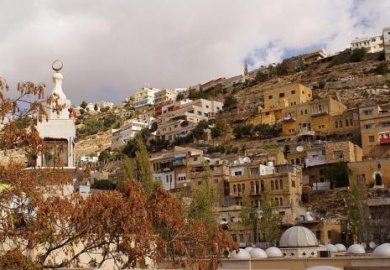SHOBAK
Shobak is one of Jordan’s most significant and impressive historical sites located on the road to Petra about 190 km (118 miles) south of Amman where stands an impressive castle as a lonely reminder of former Crusader glory.
Just off the King’s Highway 190 km (118 miles) south of Amman and less than an hour north of Petra stands an impressive castle as a lonely reminder of former Crusader glory dating from the same turbulent period as Al-Karak, crowning a cone of rock, which rises above a wild and rugged landscape dotted with a grand sweep of fruit trees below.
It is today known as Shobak, but to the Crusaders it was Mont Real (Crak de Montreal) or Mons Regalis, the Fortress of the Royal Mount. It was built in 1115 by King Baldwin I of Jerusalem to guard the road from Damascus to Egypt, and was the first of a string of similar strongholds in the Latin Kingdom of Jerusalem.
Salahuddin Al-Ayyoubi (Saladin) attacked it on several occasions, finally capturing it in 1189 (only 75 years after it was raised) when the Crusaders were losing their foothold throughout the Holy Land. Inscriptions by Saladin’s proud successors appear on the castle wall. In 1260, it passed to the Mamluks whom restored it in the following century, adorning its walls and towers with Arabic inscriptions which testify to their work. Since then it has lain largely untouched, gradually falling into greater disrepair.
The castle’s exterior is impressive, with a forbidding gate and encircling walls three layers thick. The walls and projecting towers are still reasonably intact, but inside the castle consists mainly of tumbled stones with a few walls and arches. One of the most fascinating remains is the ancient well-shaft cut deep into the rock, with 375 steps leading down to the water supply at the bottom.
There are several small villages in the area, for there are abundant springs and fertile valleys where olives, grapes, figs, and apricots are grown, as well as grain crops. Earlier this century the castle itself was occupied by a few local families, and there was a market within its walls which served all the villages. Before 1948 trade links were mainly with Palestine, and the villagers would make regular trips to Beersheba to sell livestock and ghee (camel butter), and to Hebron and Jerusalem to buy sugar, oranges and cloth. Today they have to go to Ma’an.




Facebook Comments